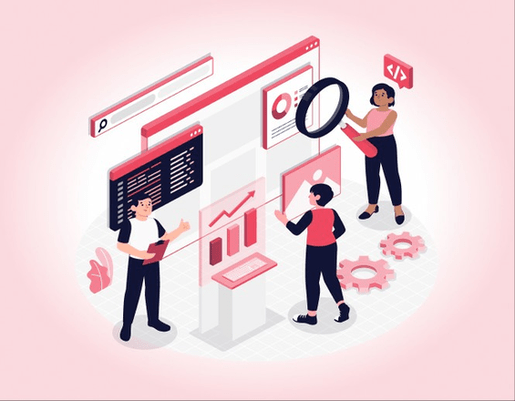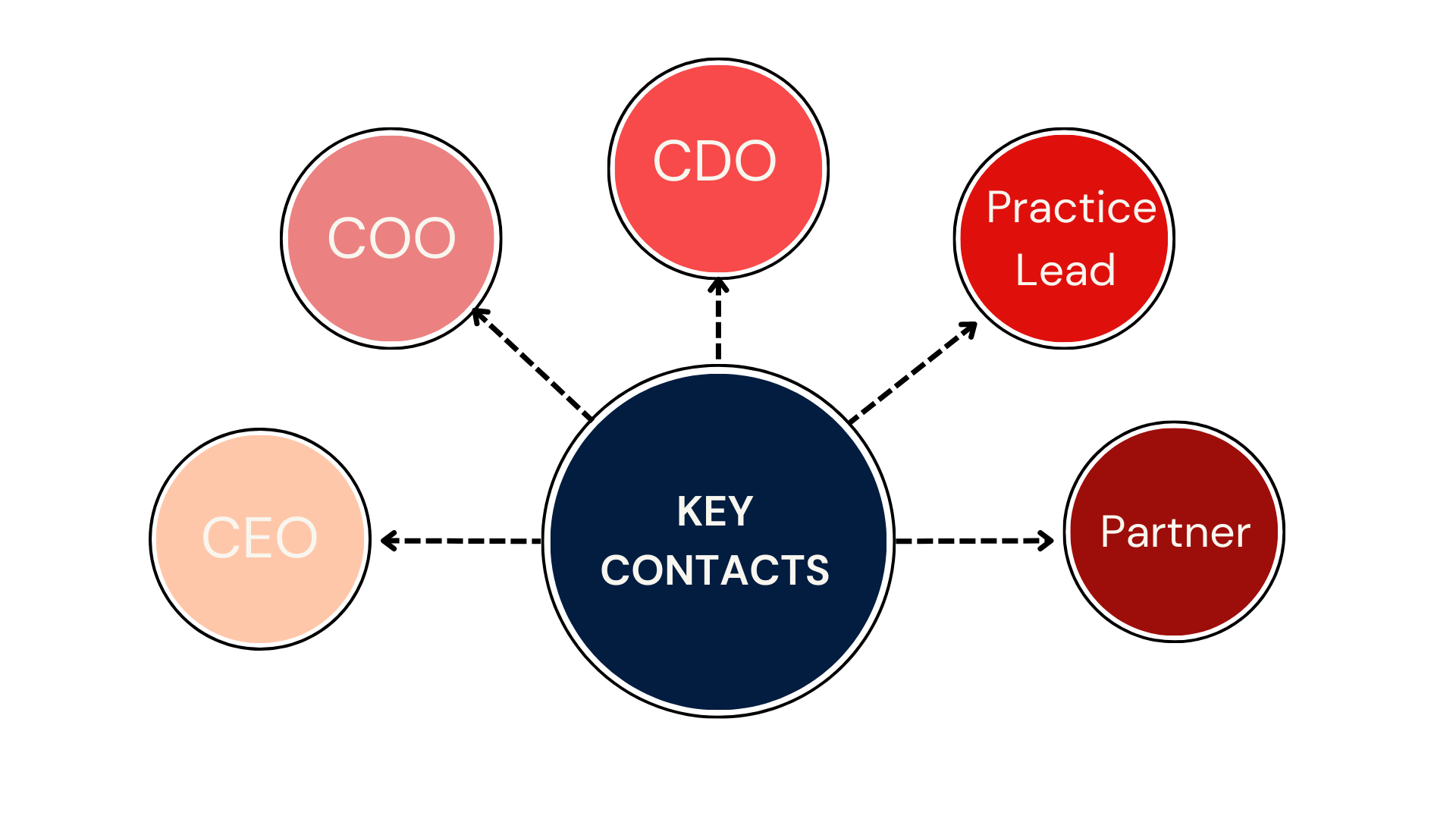
Home »
End-to-End Processes in Professional Services Firms
Navigate through the efficiency of end-to-end processes in professional services firms.
Introduction
In today’s rapidly changing business environment, understanding your company’s complete process and improving its efficiency and returns is critical for success.
In this article, we’ll discuss the important parts of professional service firms processes, including sales and marketing, project delivery, and more. We’ll help you understand how to optimize your end-to-end processes for success.

Defining End-to-End Processes
It involves all the activities that occur from the first communication with a customer to the final delivery of a service. In professional services firms, these processes involve everything from lead generation and suitableness to project delivery, invoicing, and payment collection.
Each step of these processes is essential to ensuring the successful delivery of high-quality services to clients. The supporting activities include managing resources, handling finances, and simplifying communication.
| Importance of End-to-End Processes | Benefits |
|---|---|
| Meeting Client Needs | Ensures timely and efficient client service delivery, reduces delays and errors. |
| Effective Resource Management | Enables efficient utilization of resources within professional services firms. |
| Transparency and Accountability | Provides transparency throughout service delivery, identifies improvement areas. |
| Enhanced Communication | Facilitates effective communication between clients and service providers. |
The Importance of End-to-End Processes in Professional Services Firms
End-to-end processes are crucial in professional services firms for several reasons. First, these processes meet the client’s needs quickly and efficiently. By streamlining these processes, firms can deliver high-quality services to clients while minimizing delays and errors.
Second, end-to-end processes enable firms to manage their resources effectively.
Third, end-to-end processes provide transparency and accountability throughout the service delivery process. By tracking each step of the process, firms can identify areas for improvement and make adjustments to ensure successful project delivery.
Finally, end-to-end processes facilitate effective communication between clients and service providers.
Lead Management
Lead management is the process of capturing and nurturing leads or potential customers throughout the sales cycle. In professional services firms, lead management involves identifying potential clients and qualifying them for further engagement. The following are some key points related to lead management:
- Lead generation: Professional services firms use various methods to generate leads, such as content marketing, advertising, referral programs, and networking events.
- Lead qualifying: It is the process of evaluating whether a generated lead is a suitable match or not. This step is crucial in determining which leads to pursue further. This involves assessing the lead’s needs, budget, timeline, and decision-making authority.
- Lead nurturing: It is a crucial process for building relationships with potential clients who may not be ready to engage immediately. It involves various activities such as follow-up communication, providing educational content, etc.
- Lead tracking: It is critical step in the sales cycle that involves monitoring and keeping track of potential leads. This ensures they are getting closer to engagement and helps find reasons why some leads may have left.

Deal Qualification
It is the process of assessing the possibility of a potential business opportunity and determining whether to pursue it further. This involves evaluating the opportunity against specific criteria, such as returns, fit with the firm’s capabilities, and level of competition.
The following are some key points related to deal qualification:
- Criteria for qualification: Firms use specific criteria to qualify deals, such as revenue potential, strategic fit, and risk level.
- Evaluation process: A scoring system or decision matrix is often used to evaluate opportunities based on the established criteria.
- Risk assessment: Assessing potential conflicts of interest, legal and regulatory issues, and financial risks is an important part of deal qualification.
- Decision-making: Based on the evaluation, the firm can make an informed decision about whether to pursue the opportunity or not.
Opportunity Management
Opportunity management involves managing the entire sales process for a potential client, from lead generation to engagement. This includes identifying and qualifying leads, nurturing relationships, proposing solutions, and closing deals. The following are some key points related to opportunity management:
- Solution proposal: Professional services firms typically create customized solutions for clients based on their needs and objectives. Opportunity management involves developing proposals and presentations that effectively communicate these solutions.
- Relationship management: Building and maintaining strong relationships with potential clients is key to successful opportunity management. This includes regular communication, providing educational content, and demonstrating thought leadership.
- Sales pipeline management: It involves tracking and managing the sales pipeline, starting from lead generation to engagement. This ensures that opportunities are progressing smoothly and deals are closing successfully.
- Sales forecasting: Professional services firms can generate accurate sales forecasts by closely monitoring the sales pipeline. These forecasts are crucial for resource planning and effective financial management.
Resource Request and Search
Resource request and search involves identifying the right resources, such as personnel and materials, for a project or engagement. This includes determining the required skillsets and expertise, as well as availability and cost. The following are some key points related to resource request and search:
- Resource allocation: Professional services firms need to ensure that they have the right resources available to meet client needs. This includes identifying internal resources as well as external resources that may need to be procured.
- Resource scheduling: Once resources are identified, they need to be scheduled and allocated to specific projects or engagements. This involves balancing resource availability with project timelines and priorities.
- Cost management: Professional services firms need to manage the cost of resources, which can include salaries, benefits, and expenses. This involves optimizing the use of internal resources and negotiating favorable rates with external vendors.
- Capacity planning: In order to meet the demand for services, professional service firms need to assess their capacity to deliver. This involves evaluating the firm’s existing resources and identifying areas where additional resources may be required.
Time and Expense Recording
Time and expense recording : It involves accurately tracking the time spent and expenses incurred on client projects or engagements. This information is essential for billing clients, managing project costs, and analyzing returns. The following are key points related to time and expense recording:
- Time tracking: It involves recording the time spent on various tasks related to client projects.
- Expense tracking: It involves accurately recording project-related expenses, such as travel costs, equipment expenses, and vendor fees. This ensures that all expenses are properly accounted for and eligible for reimbursement if required.

- Timesheets and expense reports: Professionals working on a project need to fill out timesheets or expense reports regularly. They need to document the hours they worked and the expenses they incurred. These records serve as a source of data for billing clients and monitoring project costs.
- Integration with project management systems: Time and expense recording systems are often connected to project management software. This integration enables the smooth transfer of data, real-time tracking, and reporting.
- Compliance and audit requirements: Firms must ensure that their recording processes align with industry norms and can withstand audits..
- Analysis and reporting: The data collected from time and expense recording is valuable for analyzing project returns, resource usage, and budgeting. It helps firms make informed decisions and identify areas for improvement in their operations.
Procurement of Services and Materials
This process involves sourcing, selecting, and acquiring the services, software, equipment, or materials needed for projects or engagements. The following are key points related to procurement of services and materials:
- Vendor selection: Firms need to identify and evaluate potential vendors based on criteria such as quality, cost, reliability, and reputation. This includes conducting supplier assessments, obtaining quotes or proposals, and negotiating contracts.
- Contract management: Once vendors are selected, contracts need to be established to define the terms and conditions of the engagement. This includes specifying products, timelines, payment terms, and any other relevant terms for the procurement.
- Supplier relationship management: Building strong relationships with suppliers is crucial for effective procurement. Firms need to establish open lines of communication, monitor performance, address issues promptly, and foster collaborative partnerships.
- Cost optimization: Procurement involves balancing the quality of services or materials with their cost. Firms need to explore cost-saving opportunities such as bulk purchasing, competitive bidding, or negotiating favorable terms with vendors.
- Risk management: Procurement processes should incorporate risk assessment and mitigation strategies. This includes considering factors such as supplier reliability, potential disruptions, compliance with legal and ethical standards, and contingency planning.
| Essential Elements of Procurement | Synopsis |
|---|---|
| Vendor Evaluation | The process of identifying and assessing potential vendors based on factors such as quality, cost, reliability, and reputation. It includes obtaining quotes, proposals, and negotiating contracts. |
| Contract Administration | The establishment of comprehensive contracts that outline the specifics of engagements, encompassing terms, products, timelines, payments, and other pertinent details. |
| Nurturing Supplier Relations | Building robust relationships with suppliers is pivotal for effective procurement. This involves fostering open communication channels, continual performance monitoring, prompt issue resolution, and collaborative partnerships. |
| Balancing Costs | Striking a equilibrium between the quality of services or materials and their associated costs. Exploring avenues for cost optimization, such as bulk purchases, competitive bidding, and skillful vendor negotiation. |
| Mitigating Risks | Incorporating comprehensive risk assessment and mitigation strategies into procurement procedures. This encompasses factors like supplier reliability, potential disruptions, adherence to legal and ethical standards, and the formulation of contingency plans. |
Travel and Expense Reporting
Professional services firms often require their employees to travel for client meetings, site visits, and other project-related activities.The travel and expense reporting process involves recording expenses, submitting expense reports, and reimbursing employees for eligible expenses.
Here are some key aspects of the travel and expense reporting process in professional services firms:
- Expense recording: Employees must record their expenses related to travel, lodging, meals, and other project-related activities. This can be done manually or through an automated system, depending on the company’s policies and procedures.
- Expense report submission: It is a process in which employees submit their recorded expenses along with supporting documents, such as receipts, invoices, and travel routes. The reports must be submitted within the specified timeframe and in compliance with the company’s policies and procedures.

- Expense approval: The expense reports are reviewed and approved by the employee’s manager or the finance team. They ensure that the expenses are eligible, reasonable, and comply with the company’s policies and procedures.
- Reimbursement: After the expense reports are approved, the finance team processes the reimbursement of eligible expenses. This can be done through direct deposit, check, or other payment methods.
Sell and Plan Engagement
- Selling and planning engagement is a crucial step in professional services firms after identifying a potential client and qualifying the deal.
- The process involves creating a proposal that outlines the services the firm will provide, the project timeline, and the expected budget.
- The proposal should be altered to the client’s specific needs and requirements and clearly communicate the value that the firm can provide.
- During the planning phase, the firm will work with the client to identify the project’s key objectives and potential challenges.
- The firm will also need to identify the resources required to complete the project, such as personnel, technology, and materials.
Recruitment and Staffing
Once the engagement has been sold and planned, the professional services firm will need to recruit and staff the project. This involves identifying the specific skills and expertise required for the project, and then finding and hiring the appropriate personnel. In some cases, the firm may need to recruit new staff members to fulfill specific roles required by the project. In other cases, the firm may be able to allocate resources from other projects or departments within the organization.

During the staffing process, it’s important for the professional services firm to consider the availability and usage of its resources.
Work and Delivery
- The work and delivery phase involves executing the plan developed during the sell and plan engagement phase.
- Resources are allocated and staff members may be recruited to ensure the project is completed successfully.
- Communication with the client is crucial during this phase to provide updates on progress and any issues that arise.
Monitoring of Staff
- Monitoring of staff is a crucial part of the work and delivery phase of a professional services project.
- The firm should closely track staff performance to ensure that they are meeting project objectives and deadlines.
- Regular check-ins and status updates can help identify and address any issues or roadblocks that arise.
- The use of project management software can help facilitate communication and tracking of staff performance.
Issue and Change Management
Even the most carefully planned projects will inevitably encounter issues or changes along the way. The firm should be ready to handle issues and changes during the project to avoid negative effects on the client relationship. This may involve revising the project plan, re-allocating resources, or making other adjustments as needed.
Project/Contract Forecasting and Billing
- Project/contract forecasting and billing are important tasks as the project approaches completion.
- The firm needs to track time and expenses, estimate the remaining work, and bill the client accordingly.
- It’s essential to monitor costs and returns to ensure the project meets the expected financial outcomes.
Project/Contract Setup and Closing
Finally, the professional services firm will need to manage the setup and closing of the project or contract. This involves ensuring that all necessary paperwork is completed and filed, and that all resources are properly allocated. It may also involve conducting a post-mortem analysis to identify areas for improvement and best practices for future projects.
Credit and Collections
To ensure that the business operates smoothly, the firms need to manage their credit and collections processes throughout the project lifecycle. This includes establishing payment terms with the client, keeping track of invoices, and pursuing collections if necessary.
Revenue Recognition
To ensure accurate financial reporting, professional services firms must effectively manage their revenue recognition processes. This involves working closely with accounting and finance teams to track expenses and revenue and ensure proper recognition of all revenue.
Key Contacts with End-to-End Business/Process Responsibility
Professional services firms have a range of key contacts who are responsible for overseeing end-to-end business and process responsibilities.
Below, we’ll take a closer look at some of the most important key contacts in a professional services firm.
- CEO – The CEO is responsible for setting the overall strategy and direction of the firm. They are often the face of the organization and play a critical role in driving growth and returns.
- COO – The COO is responsible for overseeing the day-to-day operations of the firm. This includes managing resources, implementing policies and procedures, and ensuring that the firm is operating efficiently and effectively.
- CDO – The CDO, or Chief Delivery Officer, who is primarily responsible to ensure that the services are delivered to clients at the high quality. They oversee project management, client communication, and other delivery-related functions.
- Practice Lead – The Practice Lead is responsible for managing a specific practice area within the firm. This may include industry-specific expertise, such as healthcare or financial services, or functional expertise, such as strategy or technology.
- Partner – Partners are typically senior executives or managers who have a significant stake in the firm. They are responsible for generating new business, managing client relationships, and overseeing project delivery.

KEBS – PSA Software
| Overview of KEBS Platform | Key Points |
|---|---|
| End-to-End Solution | KEBS is a complete quote-to-cash platform designed to meet SME ERP requirements. |
| Comprehensive Approach | Offers a range of modules covering finance, project management, HR, CRM, OKR, ticketing, and workflows. |
| Seamless Integration | Integrated modules provide a unified platform for managing all operations. |
| Effective Financial Management | Enables accurate revenue recognition and real-time MIS for budget control. |
| Flexibility and Integration | Offers flexible pricing plans and third-party app integration for customization. |
| Low-Code Development | Allows SMEs to create custom apps and forms without extensive coding knowledge. |
| Streamlined Operations | Enhances SME efficiency, productivity, and growth by focusing on core objectives. |
Deal Management
- Pro-tool for outstanding Customer Experience.
- Streamline your processes, automate approvals, and gain valuable insights into your sales pipeline.
Resource Management
- Efficient Resource Management for Business Edge.
- With KEBS ensure maximum resource efficiency with minimum effort.
Project Management
- Premium project software for professional services.
- Streamline projects, enhance collaboration, achieve better outcomes.
Finance Management
- Achieve Budget Optimization and maximizing revenue.
- Maximize profits with KEBS Finance Management for business transformation.
Ticketing System
- Streamline Ticket Resolution with Categorization.
- Give your customers an enhanced experience with reduced waiting period.

Conclusion
Professional services firms play a critical role in supporting businesses and organizations across a wide range of industries. These firms offer important help and support to their clients, including consulting, project management, and advisory services.
To get the most value from professional services, businesses should understand how these firms work and navigate their processes effectively.
Achieve 2x Growth with your projects and resources and fix your revenue leakages with KEBS!









